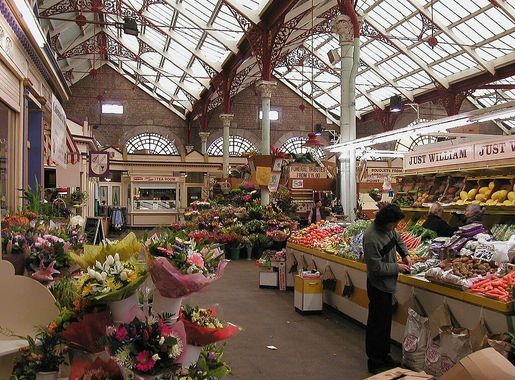
St. Helier: The Gem of Jersey
Discover St. Helier, Jersey's vibrant capital, where history, culture, and natural beauty blend seamlessly to create an unforgettable travel experience.
Welcome to St. Helier, the vibrant capital of Jersey, nestled in the heart of the Channel Islands. This charming town offers a perfect blend of historical allure, modern attractions, and scenic beauty. From its picturesque harbor to its bustling markets, St. Helier is a treasure trove waiting to be explored. Stroll through the quaint streets and discover a mix of traditional and contemporary architecture. Visit the iconic Elizabeth Castle, a fortress that has defended the island for centuries and can be reached by foot at low tide or by ferry. Don't miss the Maritime Museum, which offers interactive exhibits that tell the story of Jersey's rich seafaring history. Shopping enthusiasts will delight in the array of boutiques and shops along King Street, while foodies can indulge in local delicacies at the Central Market. For a taste of the island's natural beauty, wander through the Howard Davis Park or take a short trip to the stunning beaches that surround the town. St. Helier's vibrant nightlife and dining scene offer something for everyone. Enjoy a quiet evening at a cozy pub or savor gourmet cuisine at one of the many fine dining restaurants. With its welcoming atmosphere and myriad attractions, St. Helier is a must-visit destination for any traveler.
Local tips in St. Helier
- Visit Elizabeth Castle during low tide to walk across the causeway, or take the ferry at high tide.
- Explore the Central Market early in the day for the freshest local produce and seafood.
- Use public transportation or rent a bike to easily navigate the town and nearby attractions.
- Don't miss the Liberation Square, a historical site commemorating Jersey's liberation from German occupation.
- Check the local event calendar for festivals, markets, and cultural events during your stay.
St. Helier: The Gem of Jersey
Welcome to St. Helier, the vibrant capital of Jersey, nestled in the heart of the Channel Islands. This charming town offers a perfect blend of historical allure, modern attractions, and scenic beauty. From its picturesque harbor to its bustling markets, St. Helier is a treasure trove waiting to be explored. Stroll through the quaint streets and discover a mix of traditional and contemporary architecture. Visit the iconic Elizabeth Castle, a fortress that has defended the island for centuries and can be reached by foot at low tide or by ferry. Don't miss the Maritime Museum, which offers interactive exhibits that tell the story of Jersey's rich seafaring history. Shopping enthusiasts will delight in the array of boutiques and shops along King Street, while foodies can indulge in local delicacies at the Central Market. For a taste of the island's natural beauty, wander through the Howard Davis Park or take a short trip to the stunning beaches that surround the town. St. Helier's vibrant nightlife and dining scene offer something for everyone. Enjoy a quiet evening at a cozy pub or savor gourmet cuisine at one of the many fine dining restaurants. With its welcoming atmosphere and myriad attractions, St. Helier is a must-visit destination for any traveler.
When is the best time to go to St. Helier?
Iconic landmarks you can’t miss
Mont Orgueil Castle
Discover the historic Mont Orgueil Castle in Gorey, Jersey, a medieval fortress with stunning views and rich heritage, perfect for history enthusiasts and tourists alike.

Elizabeth Castle
Discover the rich history and stunning views at Elizabeth Castle, a remarkable fortress in St Aubin's Bay, Jersey, perfect for every traveler.

Jersey Market
Discover the heart of St Helier at Jersey Market, a vibrant hub for fresh produce, artisanal crafts, and unique local gifts.
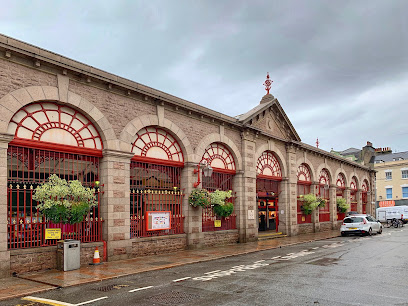
Howard Davis Park
Experience the natural beauty and serenity of Howard Davis Park, a must-visit oasis in the heart of Jersey perfect for relaxation and exploration.
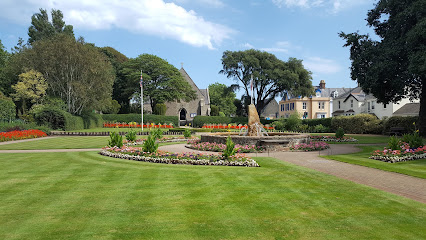
Pomme d’Or Hotel
Discover the charm of St Helier at Pomme d’Or Hotel, a luxurious retreat blending history, comfort, and modern amenities in the heart of Jersey.
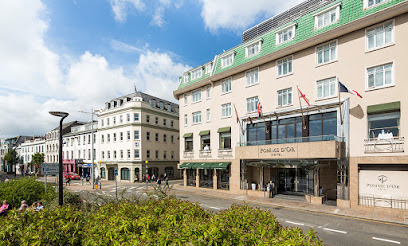
The Lamplighter
Discover The Lamplighter in St Helier, Jersey: a cozy pub with local brews, hearty meals, and a welcoming atmosphere for all visitors.
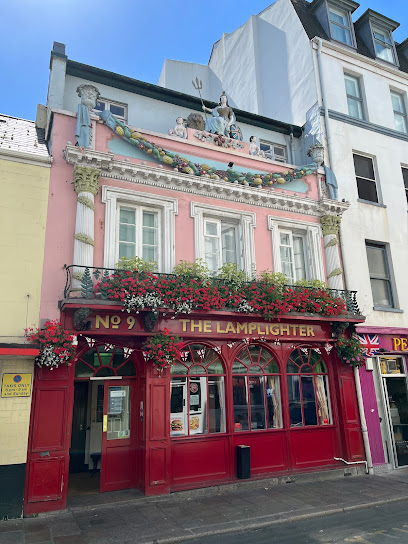
Les Jardins de la Mer
Discover the lush landscapes and vibrant flora of Les Jardins de la Mer, a tranquil garden retreat along the stunning coast of St Helier, Jersey.

Bella Italia - Jersey
Experience authentic Italian cuisine at Bella Italia in St. Helier, Jersey, with a menu featuring gluten-free and vegan options for every palate.
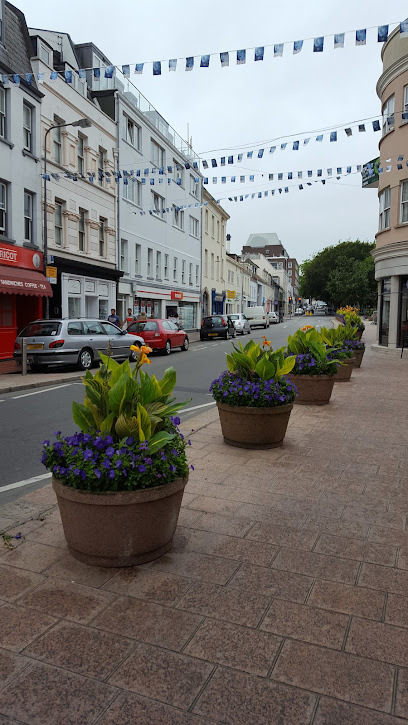
Maritime Museum & Occupation Tapestry Gallery
Uncover Jersey's maritime history and artistic storytelling at the Maritime Museum & Occupation Tapestry Gallery, a cultural gem in St. Helier.
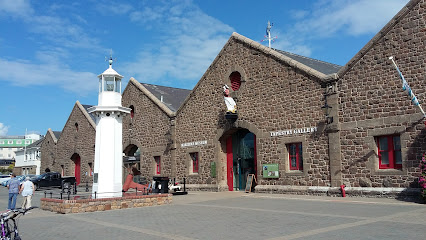
La Hougue Bie Museum
Explore centuries of history at La Hougue Bie Museum, Jersey's premier local history museum showcasing ancient artifacts and stunning archaeological sites.
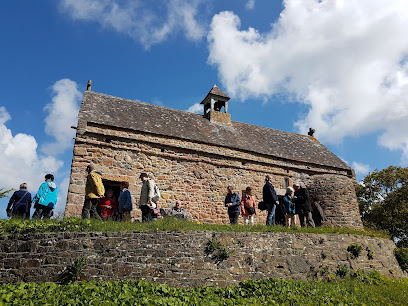
Fort Regent
Discover Fort Regent in St Helier, Jersey - a unique blend of leisure, history, and stunning views in a vibrant recreational hub.

Jersey Museum, Art Gallery and Victorian House
Explore Jersey's vibrant history and art at the Jersey Museum, Art Gallery, and Victorian House – a cultural hub in St Helier.
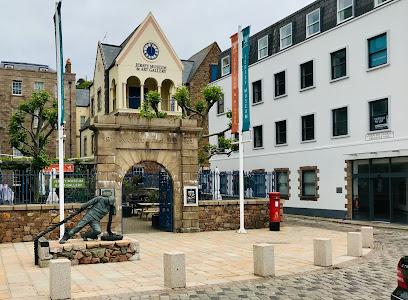
Grosnez Castle
Discover the historic Grosnez Castle, a stunning medieval fortress on Jersey's rugged cliffs, offering breathtaking coastal views and rich history.
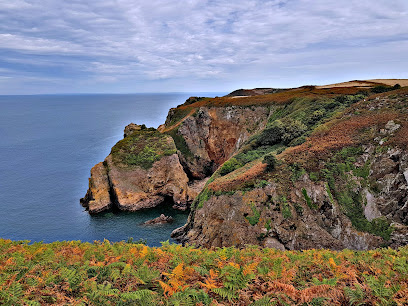
Blue Note Bar
Discover the heart of St. Helier’s nightlife at Blue Note Bar, where live music and a welcoming pub atmosphere create unforgettable experiences.
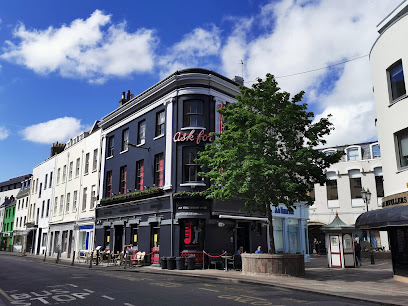
The Halkett Pub & Dining
Discover The Halkett Pub & Dining in St. Helier, Jersey, where traditional pub fare meets modern culinary excellence in a vibrant atmosphere.
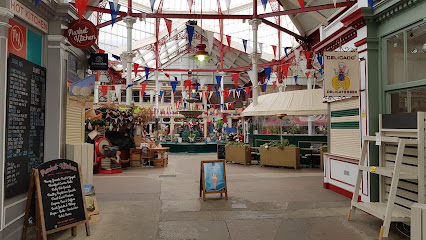
Unmissable attractions to see
Jersey War Tunnels
Discover the poignant history of Jersey during World War II at the Jersey War Tunnels, a must-visit historical landmark and museum.
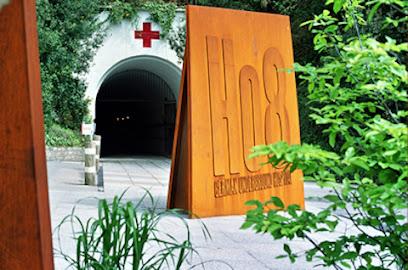
Mont Orgueil Castle
Discover the rich history and stunning views of Mont Orgueil Castle, a medieval fortress in Gorey, Jersey, perfect for history enthusiasts and nature lovers alike.

St Brelade's Bay
Discover the breathtaking beauty of St Brelade's Bay, a stunning beach in Jersey perfect for relaxation, adventure, and local culinary delights.
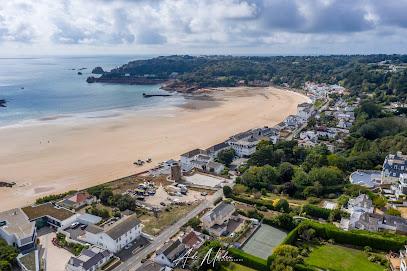
Jersey Pearl
Experience the beauty of Jersey Pearl, where artisanal craftsmanship meets stunning coastal views and delicious local cuisine.
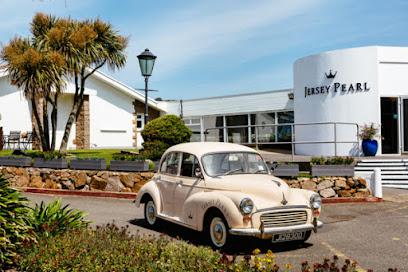
Les Jardins de la Mer
Explore the serene beauty of Les Jardins de la Mer, a coastal garden oasis in St Helier, Jersey, perfect for relaxation and stunning views.

Maritime Museum & Occupation Tapestry Gallery
Explore the rich maritime heritage of Jersey at the Maritime Museum & Occupation Tapestry Gallery, a captivating journey through history and culture.
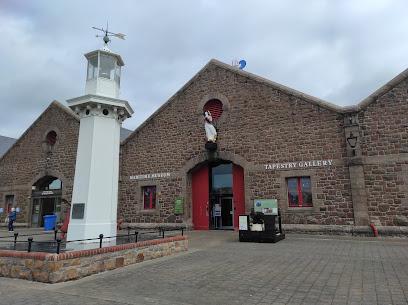
La Hougue Bie Museum
Discover the rich history of Jersey at La Hougue Bie Museum, featuring ancient monuments, engaging exhibits, and stunning gardens.

Jersey Museum, Art Gallery and Victorian House
Explore the rich history and vibrant art of Jersey at the Jersey Museum and Art Gallery, where culture meets heritage in a stunning setting.
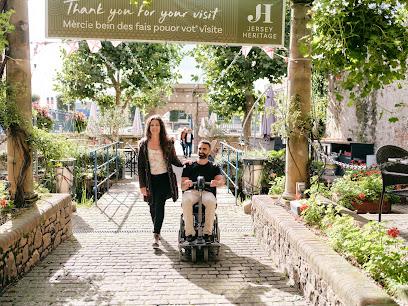
Grosnez Castle
Explore the enchanting Grosnez Castle in Jersey—where history meets stunning coastal views and unforgettable experiences await every visitor.

Hamptonne Country Life Museum
Discover Jersey's rich agricultural heritage at Hamptonne Country Life Museum, a captivating journey through time in beautifully preserved surroundings.
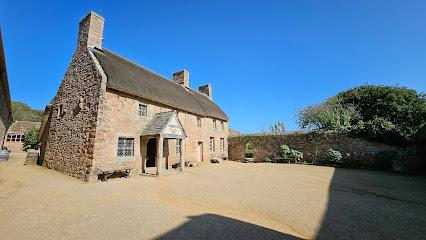
Noirmont
Explore Noirmont in Jersey, a stunning coastal park combining breathtaking views, rich history, and serene walking trails for every nature lover.
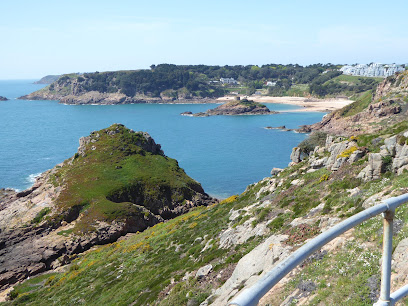
People's Park
Explore the lush landscapes and tranquil beauty of People's Park in St. Helier, Jersey, a perfect escape for relaxation and recreation.
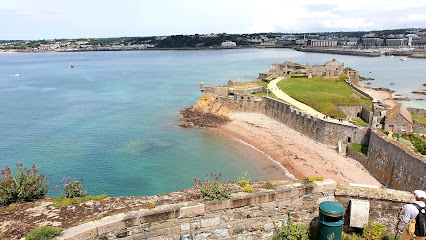
Beauport Beach
Unwind at Beauport Beach, Jersey: a serene haven of golden sands, crystal-clear waters, and breathtaking coastal views perfect for relaxation and adventure.
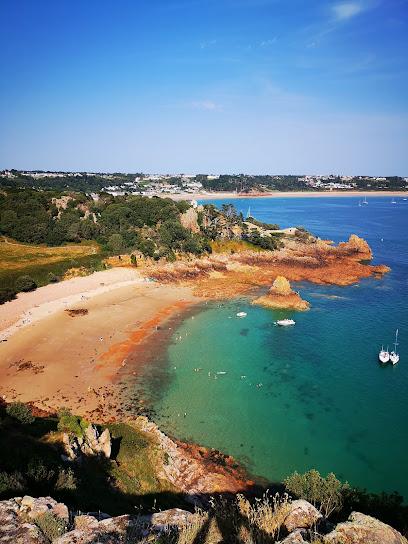
Reg's Award Winning Gardens
Explore the serene beauty of Reg's Award Winning Gardens in St Brelade, Jersey, where vibrant flora and tranquility await every visitor.
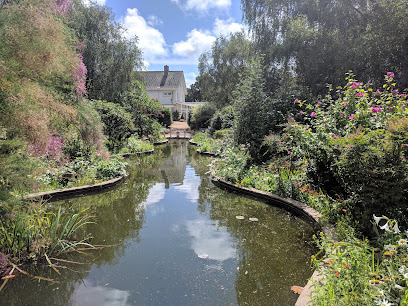
Jersey Harbours
Explore the stunning Jersey Harbours, where maritime beauty meets vibrant local culture, perfect for leisurely strolls and unforgettable dining experiences.
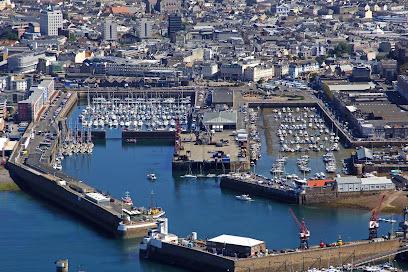
Essential places to dine
Bella Italia - Jersey
Experience authentic Italian cuisine at Bella Italia in Jersey with gluten-free and vegan options available for all diners.
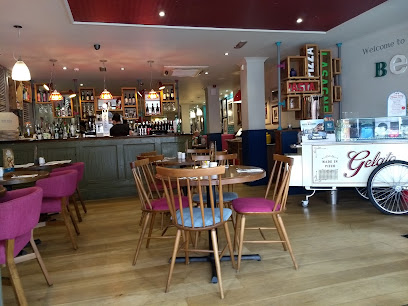
Wild Fire
Discover authentic Spanish tapas and European cuisine at Wild Fire in St Helier - where every dish tells a story.
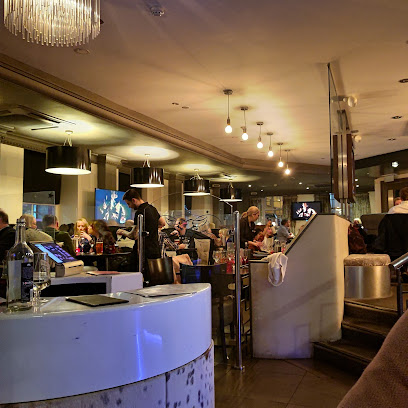
Quayside Bistro & Grill
Experience the best of Jersey's seafood at Quayside Bistro & Grill with stunning views and a vibrant atmosphere.
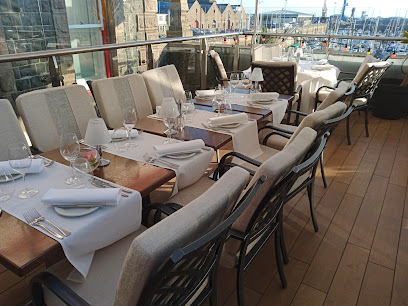
TGI Fridays - Jersey
Experience the vibrant taste of America at TGI Fridays Jersey, perfect for family meals and fun nights out with friends.
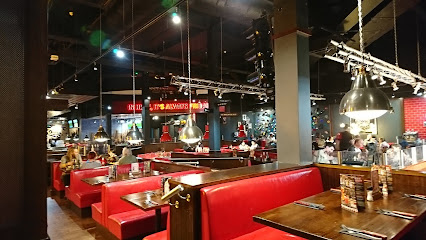
The Halkett Pub & Dining
Discover delightful dishes and local brews at The Halkett Pub & Dining in St. Helier - where tradition meets culinary innovation.
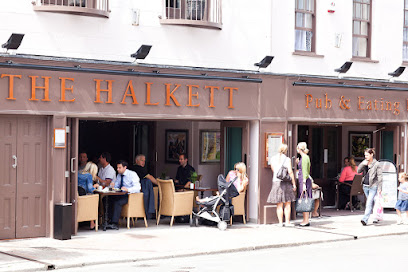
Roseville Bistro
Experience exquisite seafood dining at Roseville Bistro in St Helier - where fresh ingredients meet warm hospitality.
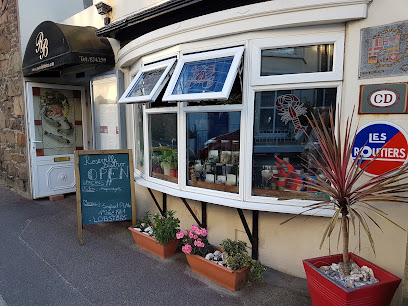
Mano's Bistro
Discover exquisite continental cuisine at Mano's Bistro in St. Helier – where every dish tells a story of flavor and freshness.
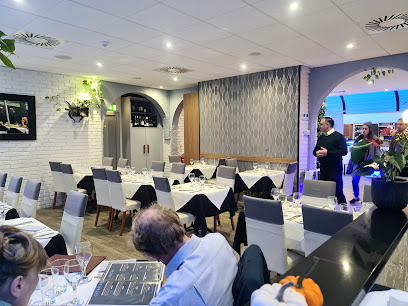
La Hacienda
Experience authentic Mexican cuisine at La Hacienda in St. Helier – vibrant flavors, festive atmosphere, and unforgettable dining await you.
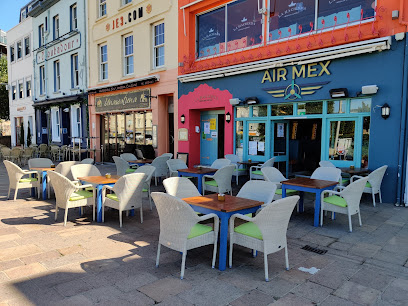
Bistro Rosa
Experience exquisite seafood at Bistro Rosa in St Helier—where fresh flavors meet a charming atmosphere in a historic fish market.
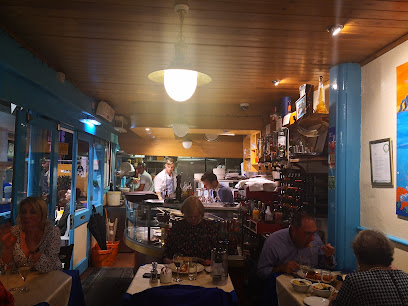
Bohemia Bar & Restaurant
Experience exquisite fine dining and vibrant cocktails at Bohemia Bar & Restaurant in St Helier, Jersey.
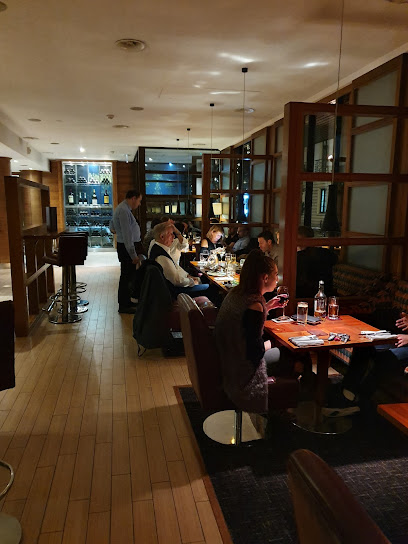
Jaipur Restaurant Jersey
Experience authentic Indian cuisine at Jaipur Restaurant Jersey – where every dish tells a story of tradition and flavor.
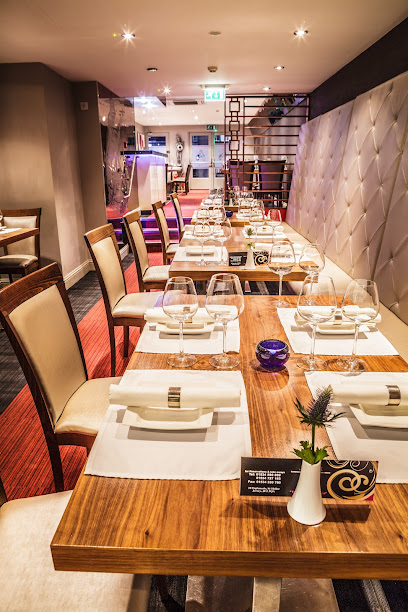
Bollywood Bytes
Discover the vibrant tastes of India at Bollywood Bytes in St Helier – where every meal is a celebration of flavor.
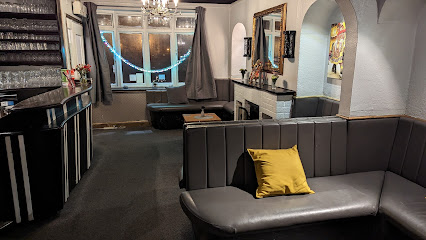
Banjo
Experience the best of Jersey's cuisine at Banjo in St. Helier—where local flavors meet modern dining.
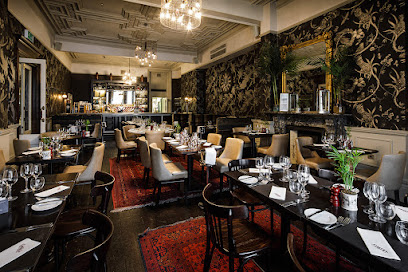
Little Italy
Savor authentic Italian cuisine at Little Italy in St. Helier, where every dish tells a delicious story.
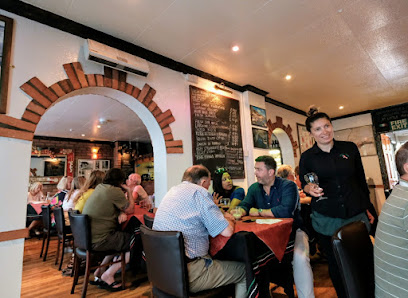
Indian Ocean Restaurant
Experience authentic Indian cuisine at Indian Ocean Restaurant in St Helier – where rich flavors meet warm hospitality.
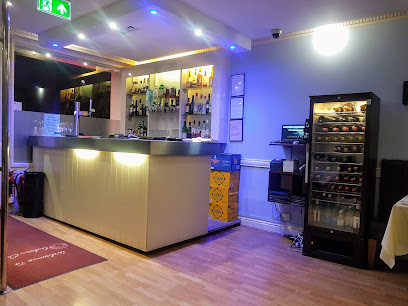
Markets, malls and hidden boutiques
Jersey Market
Discover unique gifts and local crafts at Jersey Market, a vibrant hub in St. Helier, perfect for tourists seeking authentic Jersey experiences.
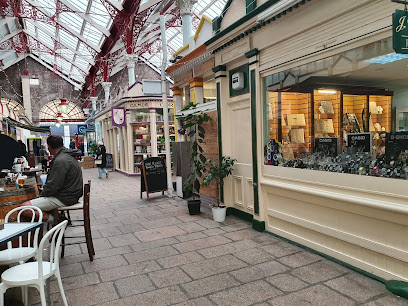
Liberty Wharf Shopping Centre
Discover a vibrant shopping haven at Liberty Wharf Shopping Centre in St Helier, Jersey, featuring a variety of shops and delightful dining options.
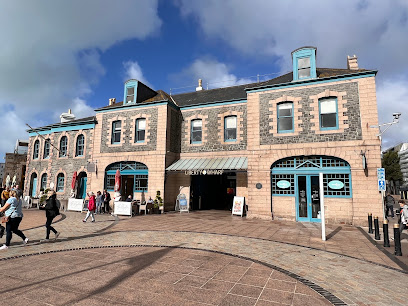
de Gruchy
Discover the charm of de Gruchy, Jersey's premier department store, featuring unique goods and exceptional service in the heart of St Helier.
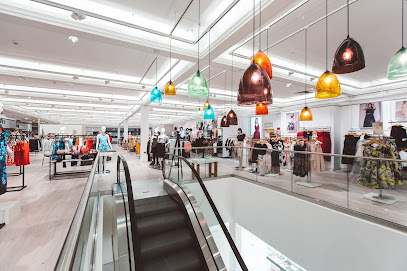
Voisins
Explore Voisins, the premier department store in St Helier, Jersey, where local charm meets a diverse range of products for ultimate shopping delight.
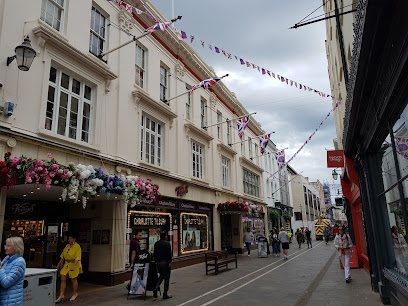
The Entertainer
Explore a world of toys and imagination at The Entertainer in St Helier, Jersey – the perfect family destination for all things fun!

Zen (Jersey) Ltd
Explore the enchanting world of spirituality at Zen (Jersey) Ltd, your premier metaphysical supply store in St Helier, Jersey.
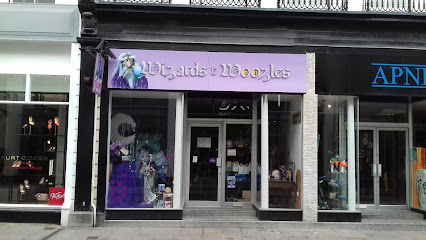
The Little Shop
Explore The Little Shop in St Helier for unique gifts and toys that embody the charm and creativity of Jersey.
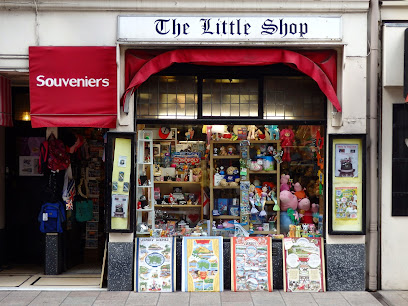
Amélie Homeware
Explore the charm of Jersey at Amélie Homeware, where unique gifts and home decor await every visitor in St. Helier.
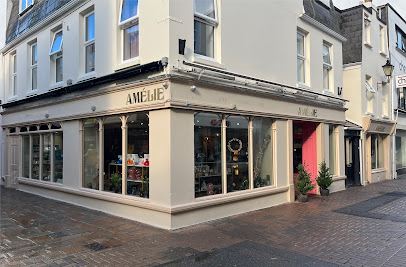
USC
Explore USC in St Helier, Jersey for a unique shopping experience featuring diverse clothing, accessories, and cosmetics at moderate prices.

Maison De Jersey
Discover unique souvenirs and local gifts at Maison De Jersey, the perfect shop to cherish your memories of the beautiful island.
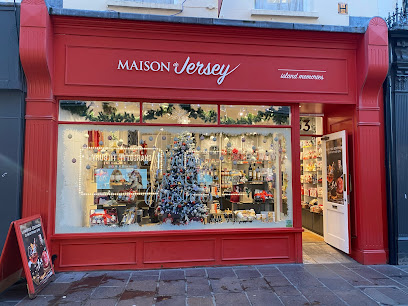
Mother Earth
Explore unique gifts and eco-friendly products at Mother Earth in St Helier, Jersey, a charming shop celebrating local craftsmanship and sustainability.
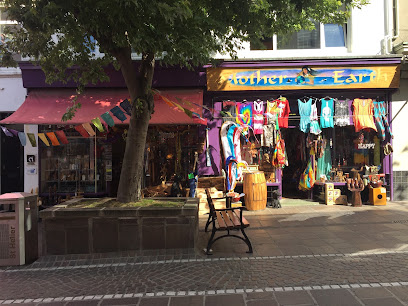
general clothing store
Explore unique fashion and exceptional service at St Helier's charming clothing store, perfect for tourists seeking stylish souvenirs.
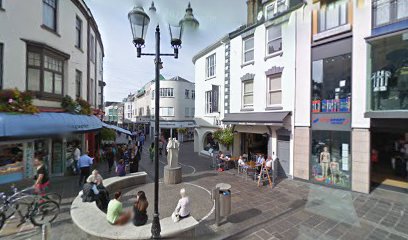
K-Earth
Explore K-Earth, St Helier's enchanting gift shop offering unique treasures and metaphysical supplies for every curious traveler.
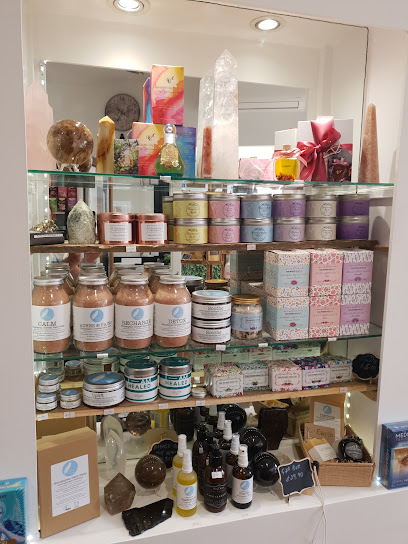
Hapi
Explore Hapi in St Helier for top-notch sportswear and elevate your fitness game while enjoying the vibrant atmosphere of Liberty Wharf.
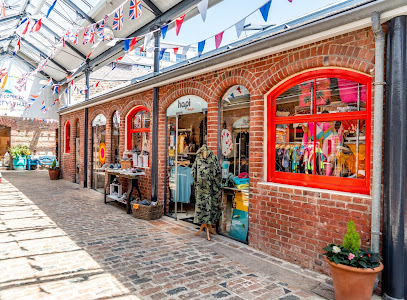
Ellis Collection
Find the latest trends in women's fashion at Ellis Collection, a premier clothing store in St. Helier, Jersey.
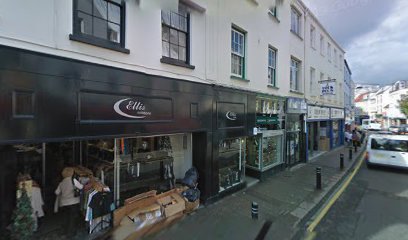
Essential bars & hidden hideouts
The Cock & Bottle
Discover the heart of St. Helier at The Cock & Bottle, a beloved gastropub blending tradition with modern dining in a historic setting.
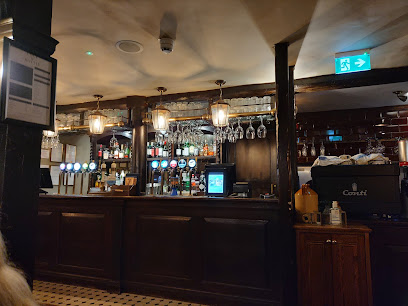
The Lamplighter
Discover The Lamplighter, a charming pub in St. Helier, where local brews and hearty meals create a warm atmosphere for visitors and locals alike.
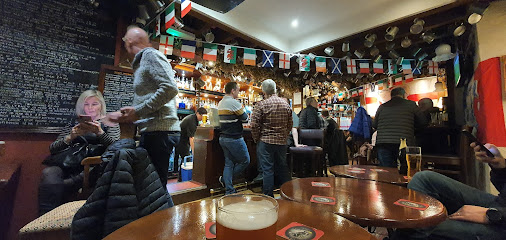
Blue Note Bar
Discover the lively spirit of Jersey at Blue Note Bar, a premier destination for live music and a vibrant pub atmosphere.
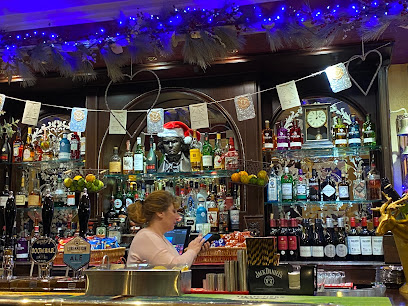
Bohemia Bar & Restaurant
Experience culinary excellence at Bohemia Bar & Restaurant in St Helier, Jersey, where fine dining meets vibrant nightlife.
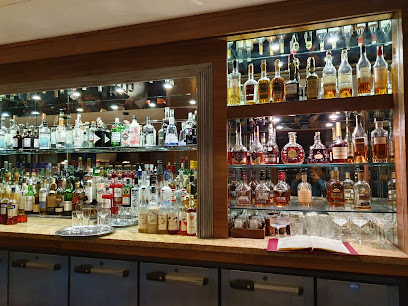
Post Horn
Experience the vibrant culture and flavors of Jersey at Post Horn Pub, where traditional charm meets modern dining in St Helier.
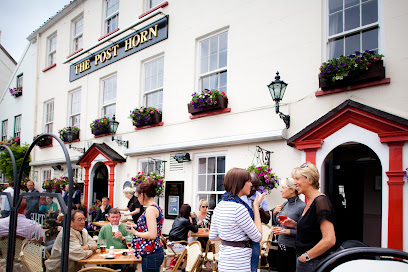
Soleil
Experience the vibrant nightlife of Jersey at Soleil, a premier pub and sports bar in St Helier, offering local brews, delicious food, and live sports.

La Bastille Bar & Brasserie
Discover the vibrant atmosphere and culinary delights of La Bastille Bar & Brasserie in St Helier, where local flavors meet casual elegance.
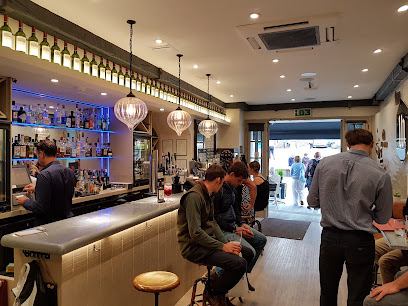
The Troubadour
Experience the vibrant nightlife at The Troubadour in St. Helier, Jersey, where great drinks and live music create unforgettable moments.
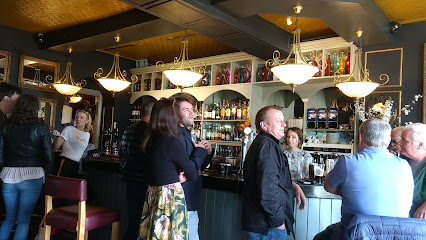
The Up & Down
Experience the lively atmosphere of The Up & Down, a top sports bar in St Helier, Jersey, with great food, live music, and unforgettable karaoke nights.
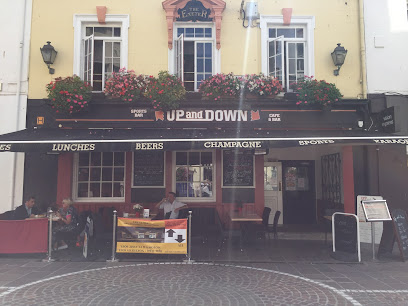
So Bar - Randalls Pubs
Experience the perfect blend of drinks and dining at So Bar in St. Helier - a vibrant spot on Jersey's scenic Esplanade.
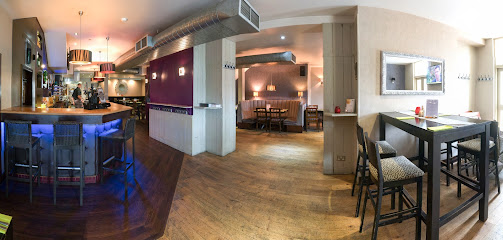
St James
Experience the vibrant nightlife at St James in St Helier, where great wines and lively entertainment await every night.
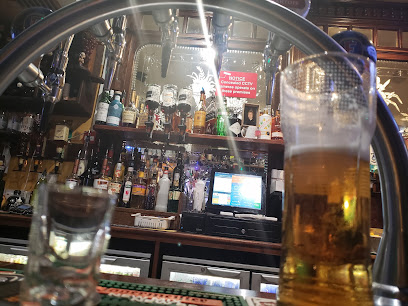
The Daily Globe Wine Bar & Eaterie
Discover the charm of The Daily Globe Wine Bar & Eaterie in St. Helier, a perfect blend of fine wines and local cuisine in a cozy atmosphere.
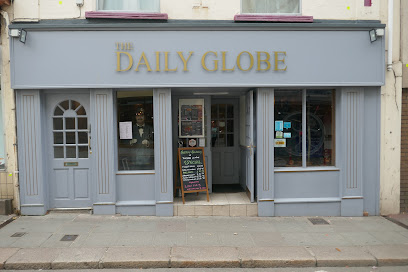
Prince's Bar
Discover the charm of Prince's Bar in Havre des Pas, a perfect blend of local flavor and warm hospitality in St. Helier.

The Kings Bar
Discover the vibrant atmosphere and local charm at The Kings Bar in St. Helier, Jersey's favorite nightlife destination.
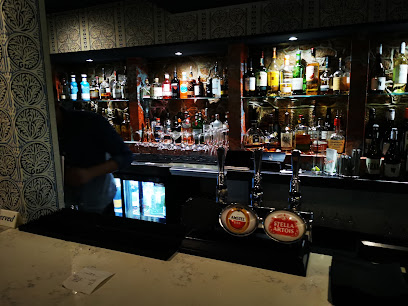
The Watchmaker
Experience refined dining and exquisite wines at The Watchmaker, a top wine bar and restaurant in St Helier, Jersey.
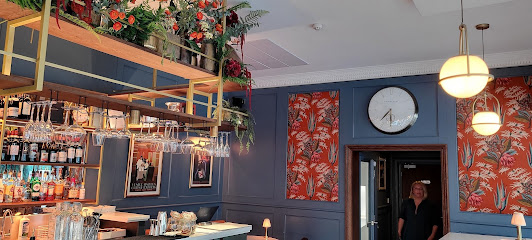
Local Phrases
-
- HelloSalut
[sa-loo] - GoodbyeAu revoir
[oh re-vwar] - YesOui
[wee] - NoNon
[non] - Please/You're welcomeS'il vous plaît/De rien
[seel voo pleh/dee ree-ehn] - Thank youMerci
[mehr-see] - Excuse me/SorryExcusez-moi/Désolé
[ex-kew-zay mwah/day-zo-lay] - How are you?Comment ça va?
[kom-moh sah vah] - Fine. And you?Bien. Et toi?
[byen/eh twah] - Do you speak English?Parlez-vous anglais?
[par-lay voo ahn-glay] - I don't understandJe ne comprends pas
[zhuh nuh kohm-prahnd pah]
- HelloSalut
-
- I'd like to see the menu, pleaseJe voudrais voir le menu, s'il vous plaît
[zhuh voo-dray vwar luh meh-nyoo, seel voo pleh] - I don't eat meatJe ne mange pas de viande
[zhuh nuh mahnj pah duh vee-and] - Cheers!Santé!
[sahn-tay] - I would like to pay, pleaseJe voudrais payer, s'il vous plaît
[zhuh voo-dray pay-ay, seel voo pleh]
- I'd like to see the menu, pleaseJe voudrais voir le menu, s'il vous plaît
-
- Help!Au secours!
[oh sek-oohr] - Go away!Allez-vous en!
[ah-lay voo zanh] - Call the Police!Appelez la police!
[ah-peh-lay lah poh-lees] - Call a doctor!Appelez un médecin!
[ah-peh-lay uh meh-deh-sanh] - I'm lostJe suis perdu
[zhuh swee pair-doo] - I'm illJe suis malade
[zhuh swee mah-lahd]
- Help!Au secours!
-
- I'd like to buy...Je voudrais acheter...
[zhuh voo-dray zah-shtay] - I'm just lookingJe regarde juste
[zhuh ruh-gard zhewst] - How much is it?Combien ça coûte?
[kohm-byan sah koot] - That's too expensiveC'est trop cher
[say troh shair] - Can you lower the price?Pouvez-vous baisser le prix?
[poo-vay voo bay-say luh pree]
- I'd like to buy...Je voudrais acheter...
-
- What time is it?Quelle heure est-il?
[kell ur eh-teel] - It's one o'clockIl est une heure
[eel eh oon ur] - Half past (10)Dix heures et demi
[dees ur eh dehm-ee] - MorningMatin
[mah-tan] - AfternoonAprès-midi
[ah-pray mee-dee] - EveningSoir
[swahr] - YesterdayHier
[yehr] - TodayAujourd'hui
[oh-zhoor-dwee] - TomorrowDemain
[duh-man] - 1Un
[uhn] - 2Deux
[duh] - 3Trois
[twah] - 4Quatre
[kah-truh] - 5Cinq
[sank] - 6Six
[sees] - 7Sept
[sept] - 8Huit
[weet] - 9Neuf
[nurf] - 10Dix
[dees]
- What time is it?Quelle heure est-il?
-
- Where's a/the...?Où est...?
[oo eh] - What's the address?Quelle est l'adresse?
[kell eh lah-dress] - Can you show me (on the map)?Pouvez-vous me montrer (sur la carte)?
[poo-vay voo muh mohn-tray/sur lah kart] - When's the next (bus)?Quand est le prochain (bus)?
[kahnd eh luh pro-shang/bus] - A ticket (to ....)Un billet (pour ....)
[uhn bee-yay/poor]
- Where's a/the...?Où est...?
History of St. Helier
-
St. Helier, the capital of Jersey, traces its origins back to the 6th century when it was named after Saint Helier, a hermit who lived on the islet known today as the Hermitage. Saint Helier's legacy endures, with his feast day on July 16th marked by celebrations and a pilgrimage to the Hermitage.
-
During the medieval period, St. Helier developed as a modest fishing village. The construction of Elizabeth Castle in the late 16th century on a tidal island off the coast provided strategic defense against French invasions. The castle, named after Queen Elizabeth I, played a crucial role in protecting Jersey from seaborne threats.
-
In the mid-17th century, St. Helier was significantly affected by the English Civil War. Jersey was a Royalist stronghold, and Elizabeth Castle served as a refuge for King Charles II. The town endured sieges and battles, leaving a lasting mark on its historical landscape.
-
The 19th century brought economic prosperity to St. Helier, driven by the island's burgeoning shipbuilding industry and its status as a trading hub. The construction of the Victoria Pier in 1846 improved maritime access, further boosting trade and tourism. This period also saw the establishment of the Jersey Market, a bustling center of commerce.
-
St. Helier experienced a dramatic chapter during World War II when Jersey was occupied by German forces from 1940 to 1945. The town's landscape was altered by fortifications and bunkers, remnants of which are still visible today. Liberation Day, celebrated annually on May 9th, commemorates the island's release from occupation.
-
Following World War II, St. Helier underwent significant modernization and growth. The reconstruction efforts led to improved infrastructure and urban development. The Esplanade and waterfront areas were transformed, enhancing the town's appeal to both residents and visitors. Today, St. Helier combines its rich history with a vibrant, modern atmosphere.
St. Helier Essentials
-
St. Helier, the capital of Jersey, can be reached via several modes of transport. The primary entry point is Jersey Airport (JER), which receives flights from numerous European cities. Direct ferries from the UK and France also serve the island, docking at the Port of St. Helier. Once on the island, taxis and rental cars are readily available to transport you to your accommodation.
-
St. Helier is compact and walkable, making it easy to explore on foot. For longer journeys, the island offers an efficient bus service operated by LibertyBus, with routes covering the entire island. Taxis are also available, and ridesharing apps can be used. Renting a bike is a popular option for exploring at a more leisurely pace.
-
The official currency is the British Pound Sterling (GBP), although Jersey also issues its own notes and coins, which are used interchangeably. Credit and debit cards are widely accepted, including contactless payments. ATMs are plentiful throughout St. Helier, and many establishments also accept Euros, though change will be given in GBP.
-
St. Helier is generally safe for tourists, with low crime rates. However, standard precautions should be taken, especially at night. Avoid poorly lit areas and keep an eye on personal belongings in crowded places like markets and festivals. There are no specific high-crime areas targeting tourists, but always stay vigilant.
-
In case of emergency, dial 999 or 112 for immediate assistance. St. Helier has a well-equipped hospital, the Jersey General Hospital, for medical emergencies. Pharmacies are widely available for minor health issues. It's advisable to carry travel insurance that covers medical emergencies.
-
Fashion: Do dress in layers, as the weather can be unpredictable. Smart-casual attire is generally acceptable. Avoid overly casual clothing when dining in upscale restaurants. Religion: Do respect local customs, particularly in places of worship. Dress modestly and remain quiet. Public Transport: Do have the correct fare ready and be courteous to the driver. Don’t eat or drink on public transport. Greetings: Do greet people with a friendly 'hello' or 'good day.' A handshake is also common. Eating & Drinking: Do try local specialties like Jersey Royal potatoes and seafood. Don’t forget to tip, as it’s customary in restaurants.
-
To experience St. Helier like a local, visit the Central Market for fresh produce and artisanal goods. Take a stroll along the Esplanade and enjoy the views of St. Aubin's Bay. Engage with locals at cafes and pubs, as they are often friendly and willing to share insights about life on the island. Don’t miss out on the seafood, especially the oysters and lobster, which are local delicacies.
Trending Landmark in St. Helier
-
Mont Orgueil Castle
-
Elizabeth Castle
-
Jersey Market
-
Howard Davis Park
-
Pomme d’Or Hotel
-
The Lamplighter
-
Les Jardins de la Mer
-
Bella Italia - Jersey
-
Maritime Museum & Occupation Tapestry Gallery
-
La Hougue Bie Museum
-
Fort Regent
-
Jersey Museum, Art Gallery and Victorian House
-
Grosnez Castle
-
Blue Note Bar
-
The Halkett Pub & Dining
Nearby Cities to St. Helier
-
Things To Do in St. Clement
-
Things To Do in St. Aubin
-
Things To Do in St. Lawrence
-
Things To Do in Gorey
-
Things To Do in Trinity
-
Things To Do in St. Peter
-
Things To Do in St. Brelade
-
Things To Do in St. Ouen
-
Things To Do in St. Anne
-
Things To Do in St. Martin
-
Things To Do in St. Peter Port
-
Things To Do in Forest
-
Things To Do in St. Sampson
-
Things To Do in St. Andrew
-
Things To Do in Vale



